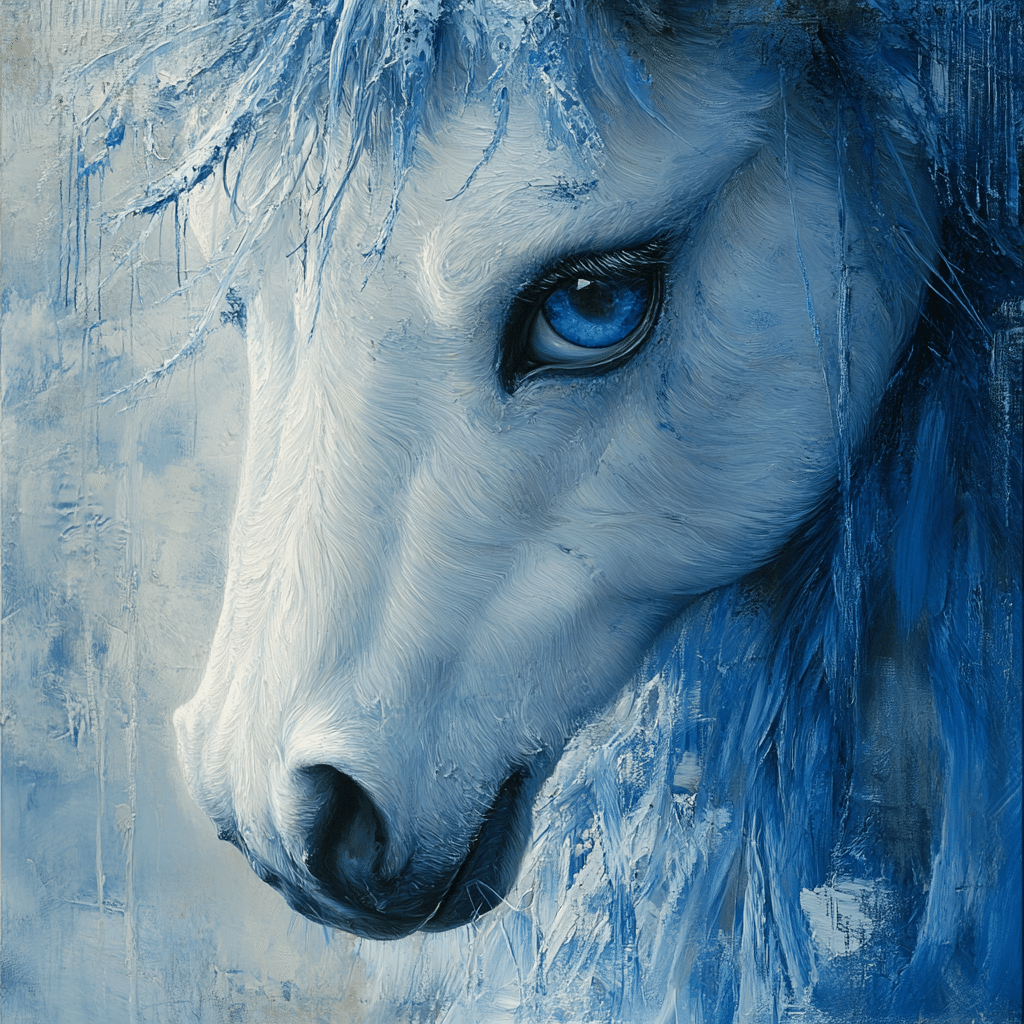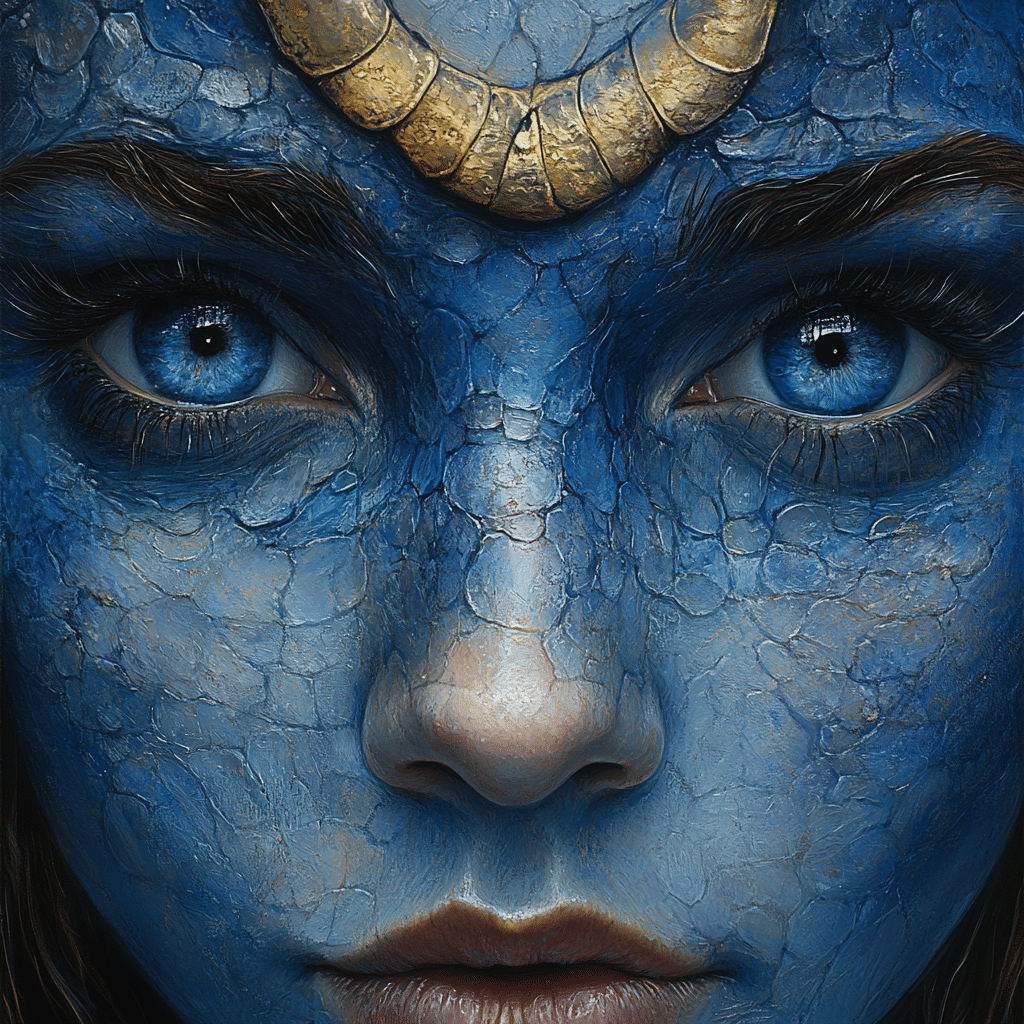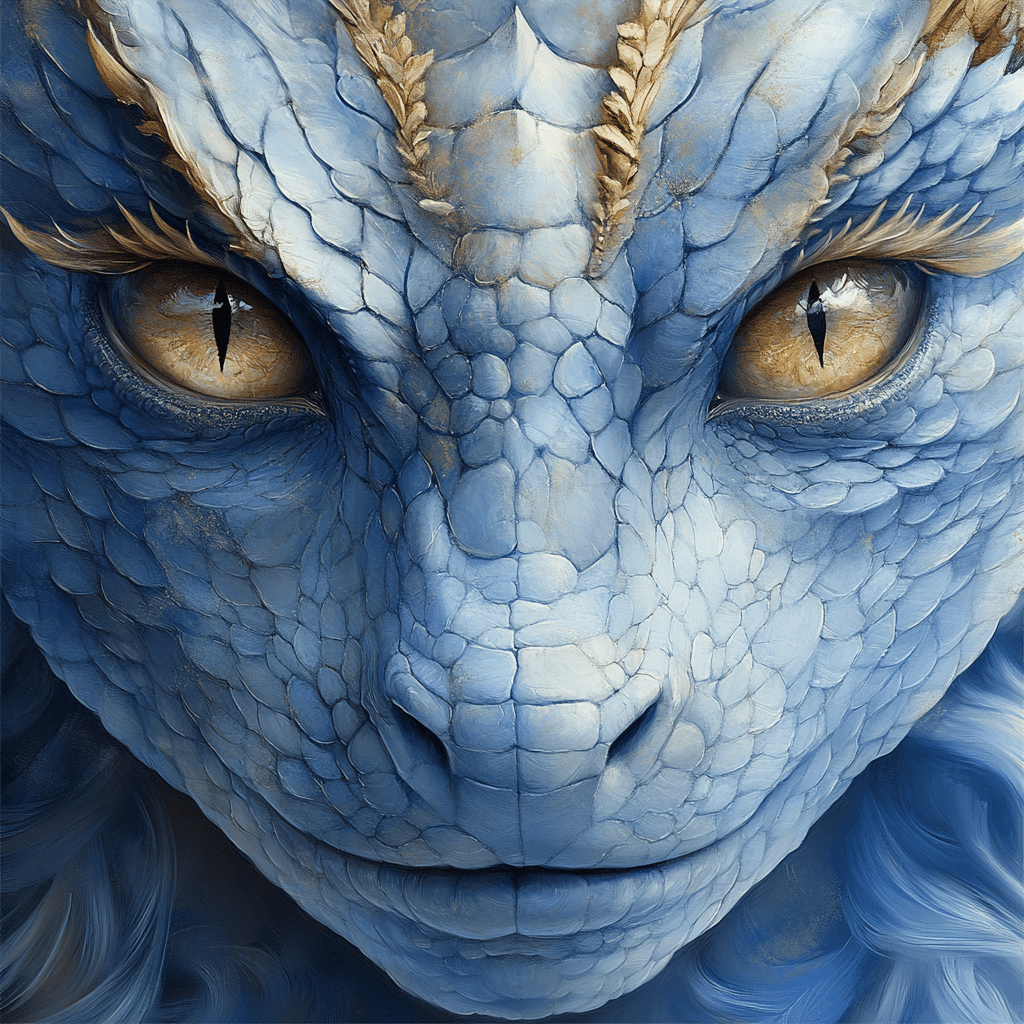Unearthing Blucifer: A Cultural Icon with a Dark History
When you land at Denver International Airport (DIA), the first thing that catches your eye is the striking blue mustang statue, affectionately dubbed Blucifer. Standing an impressive 32 feet tall, this fiberglass and steel statue, officially known as “Mustang,” grabs attention with its intense, glowing red eyes. These bold orbs not only bewitch passersby but also ignite local folklore and spark myths that weave through Denver’s cultural tapestry. Blucifer represents much more than just an art piece; it embodies the richness of history and character that defines the stunning Rocky Mountain region.
But what’s the story behind this daring figure? The origins of Blucifer stem from artist Luis Jiménez, who envisioned the mustang as a tribute to the untamed spirit of the American West. Tragically, Jiménez lost his life in 2006 when a piece of the horse fell on him during the statue’s construction. This remarkable yet somber event has drawn considerable attention and controversy, leading many to ponder—Is Blucifer cursed, or does it herald a symbol of profound loss? It’s a question swirling like the winds that grace Denver’s skies.
A Horse of Many Colors and Stories
Blucifer’s blue hue is inspired by Denver’s wide-open sky and vivid landscapes, capturing the essence of the local environment. Yet, the statue also evokes conversations around environmental consciousness. As Colorado continues to grow and urbanize, Blucifer stands as a reminder of the intricate dance between development and nature. It’s here, at the crossroads of culture and public art, that Blucifer solidifies its reputation as a beloved yet enigmatic cultural icon.

The Top 5 Fascinating Facts About Blucifer
Few art pieces carry tales like Blucifer. The tragic death of Luis Jiménez adds layers of depth to this vibrant statue. Many visitors recount eerie feelings if they linger too long near Blucifer, pondering the connection between art and mortality.
Blucifer evokes strong reactions across the board. Some view it as a proud testament to the Wild West, symbolizing freedom and resilience. Conversely, others consider it a foreboding figure embodying darkness, dubbing it a “death horse.” This tension between admiration and skepticism reveals much about contemporary art’s relationship with the public.
Amid Denver’s sprawling growth, Blucifer serves as a poignant reminder of nature’s vitality. Some residents interpret this mustang as advocating for balance between urban progression and natural preservation. It taps into discussions around protecting Colorado’s dazzling landscapes, making it a living artifact of the region’s ethos.
Over the years, Blucifer transformed from a local talking point into a national emblem. Sprinkled through social media and pop culture—think memes and appearances on shows like South Park—it bridges art and contemporary life. This growing recognition showcases not only its beauty but also its ability to engage audiences in broader cultural conversations.
Not just a solitary figure, Blucifer’s impact extends into the businesses surrounding DIA. Restaurants like Piccola Cucina creatively incorporate mustang themes into their decor and menus. Craft stores now sell “Guerita” merchandise that proudly features images of the mustang. Even Publix Subs has concocted sandwich names inspired by the artistic icon, drawing curious travelers into unique culinary experiences.
The Artistic Techniques Behind Blucifer’s Majesty
Creating Blucifer was no small feat. Artist Luis Jiménez utilized a combination of fiberglass and steel, allowing for a strong but flexible sculpture. This imaginative blend endured the elements while also embodying the fiery spirit of the horse. The dynamic blue finish pays homage to the expansive Colorado sky and was intentionally chosen to elicit strong emotional responses.
The vibrant red LED lights illuminating Blucifer’s eyes serve dual purposes. They hark back to Jiménez’s childhood experiences in his father’s neon sign-making shop—a nostalgic nod that adds depth to the statue’s allure. Each brush stroke and structural element reflects not only Jiménez’s vision but also the many personal tales waiting to be told beneath the statue’s watchful gaze.

Public Interaction and Engagement: How Visitors Connect with Blucifer
Blucifer is not merely a static installation, but a vibrant piece woven into the heart of Denver’s tourist experience. Travelers flock to take selfies and share stories, triggering a wave of social media interaction that spreads awareness of the mustang’s significance. This engagement highlights how public sculptures can nourish community spirit and provoke conversation in a very personal manner.
Local campaigns encourage visitors to connect with Blucifer, inviting them to find fun ways to engage with the artwork. Creative pop-up events, like photo contests or guided tours, serve as engaging touchpoints. Visitors feel empowered when they share their moments with Blucifer, weaving their own narratives into the ongoing tapestry of this cultural landmark.
Legends and Myths: The Stories You Didn’t Know About Blucifer
With each passing year, Blucifer has become enveloped in urban legend. Some tales recount ghostly sightings near the statue, while others whisper about conspiracies linking it to secret messages. These legends expose deeper societal fears and values, illustrating how art intersects with our beliefs and superstitions.
Other stories associated with Blucifer remind us of humanity’s perpetual struggle with the unknown. The juxtaposition of beauty and horror is central to many tales crafted around the statue. Here, myth and reality mingle, invoking wonder and curiosity about art and life’s complexities.
The Legacy of Blucifer: Future Foam and Fables
As Denver continues to evolve and expand, Blucifer stands as a lasting tribute to artistic resilience. The growing discussions around public art and community identity reveal how one sculpture can shape dialogues that span generations. It’s a testament to collective memory and the conversations we engage in about art and its impressions on society.
Blucifer captivates not just Denver’s inhabitants but also visitors and travelers alike, encouraging them to contemplate their connections to modern art and local culture. This compelling horse remains rooted in physical space while soaring into the imagination, a symbol of both peril and possibility. With its myriad stories, legacies, and reflections, Blucifer resonates with the spirit of the American West—bold, beautiful, and irresistibly alive.
Blucifer: The Bold Mustang of Denver Airport
The Legend of Blucifer
Blucifer, the iconic blue mustang statue at Denver International Airport, has become a staple of both folklore and traveler intrigue. Standing a formidable 32 feet tall, this striking piece of art is crafted from fiberglass and resin. But here’s a bit of trivia: Blucifer’s glowing red eyes were not just for effect; they symbolize the fiery spirit of the Wild West! Did you know that Flights To Pittsburgh often pass near this magnificent creature? Travelers can’t help but snap a picture before jetting off.
The Creole Connection
Interestingly, the original artist, Luis Jiménez, met a tragic fate when a piece of his own creation fell on him during its construction. This dark twist only adds to the mystique surrounding Blucifer. Some folks, inspired by the strange energy of the statue, have even penned stories connecting it to the folklore of Michoacan, Mexico. Just picture that! If you’re admiring the mustang and feeling adventurous, you might also want to check out the Brimfield Flea market for some quirky finds to take home.
A Must-See Amid the Critique
Not everyone sings Blucifer’s praises, though. Some believe this bold mustang is more menacing than majestic, but that’s just part of its charm. Need a laugh? Vanessa Bayers humor has been known to lighten any conversation about odd airport attractions, including Blucifer. If you’re looking for some fresh takes on unusual topics, keep an ear out for her comedic twist. So, whether you’re passing through Denver or just curious, don’t miss out on seeing this piece of art – it’s been a talking point for many, just like infamous fingerless Gloves in fashion circles. And who could forget those stories, such as the ones that surface as visitors explore places like the Japanese Tea Garden in San Antonio? Each destination has a tale waiting to be told!

What is the meaning behind Blucifer?
Blucifer represents the powerful and wild spirit of the American West, symbolizing freedom and strength rather than being cursed. The bright red LEDs in his eyes reflect the personal connection of the artist, Luis Jiménez, to his father and childhood memories.
What happened to the creator of Blucifer?
In 2006, Luis Jiménez, the creator of Blucifer, tragically died when a piece of the statue fell on him during its construction, which added a somber note to the statue’s legacy.
What is Blucifer’s real name?
Blucifer’s real name is the Blue Mustang, a striking cast-fiberglass sculpture located at Denver International Airport.
How heavy is Blucifer?
Blucifer weighs around 9,000 pounds, making it a hefty piece of art that certainly stands out.
What is the significance of the blue horse?
The blue horse holds significance as a representation of freedom and the untamed spirit of the Western landscapes, resonating with the history and culture of the region.
What is the symbol of dead horse?
The dead horse symbolizes various themes, including loss and the connection to the land, often associated with the tragic stories of the West.
How tall is the statue of Blucifer?
The statue of Blucifer stands tall at 32 feet, making it an impressive sight for travelers at the airport.
What happened to the Bonanza horses?
The Bonanza horses, known for their significance in the history of American art, were unfortunately lost in a fire that destroyed their studio during the height of their fame.
Who finished Blucifer?
Luis Jiménez began the work on Blucifer, but after his passing, the statue was completed by other artists and construction teams who respected his vision.
Why does the Denver airport horse have red eyes?
The Denver airport horse has red eyes that are meant to symbolize the connection between the artist’s family and his childhood, standing out with an almost mythical quality.
What is Sarati’s real name?
Sarati’s real name is not widely known, and it’s part of her artistic persona, often used in her works.
What is Honjo’s real name?
Honjo’s real name is also not generally disclosed, reflecting the trend among some artists to keep their true identities private.
Who owns Denver airport?
Denver airport is owned by the City and County of Denver, and it’s run by a team that manages its operations and ongoing developments.
How heavy is the heaviest horse?
The heaviest horse on record weighed around 2,800 pounds, showcasing the impressive size of draft breeds like the Shire and Clydesdale.
How tall is the Blue Mustang?
The Blue Mustang, or Blucifer, towers at an impressive 32 feet, solidifying its place as a landmark at the airport.

























